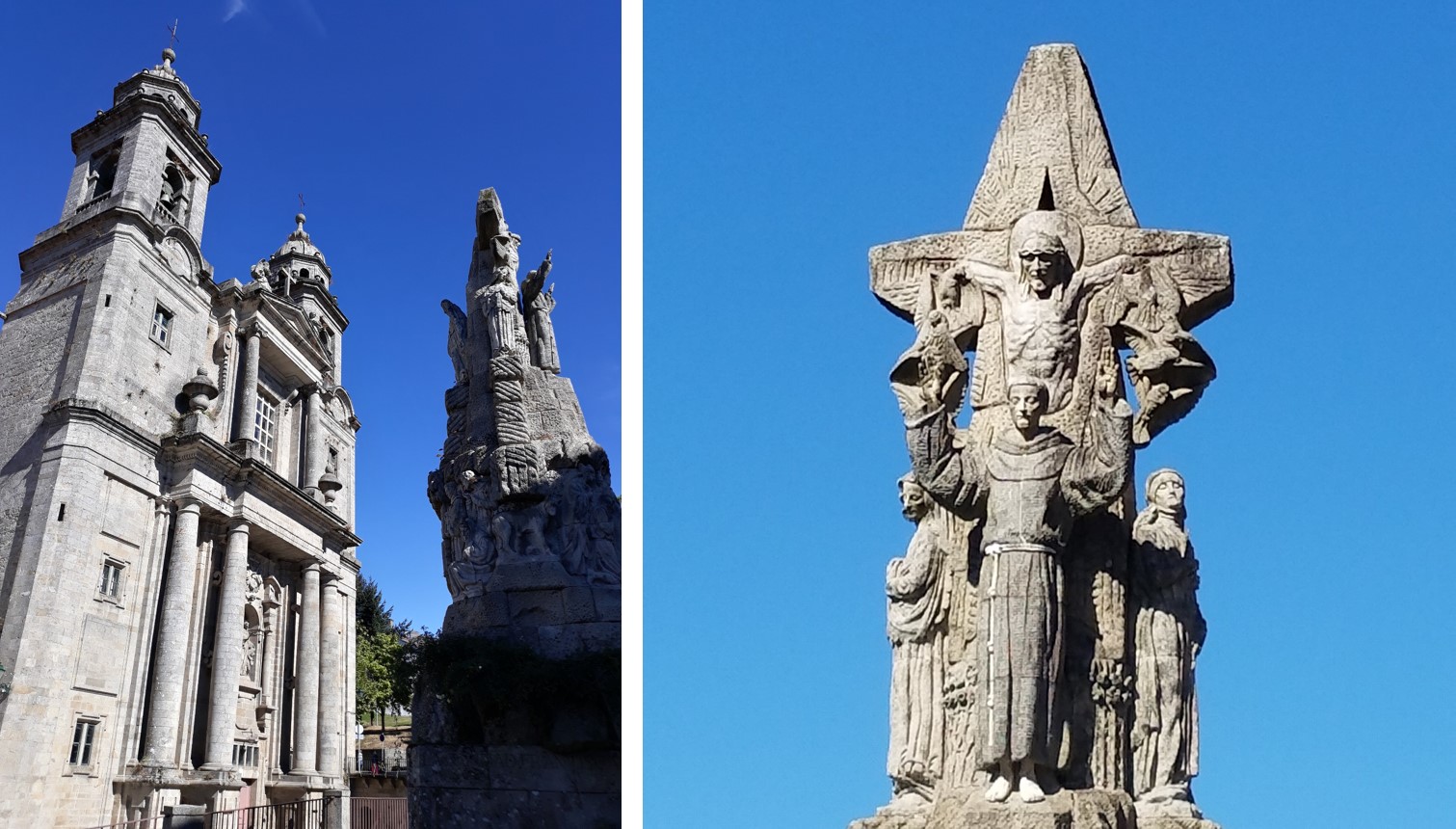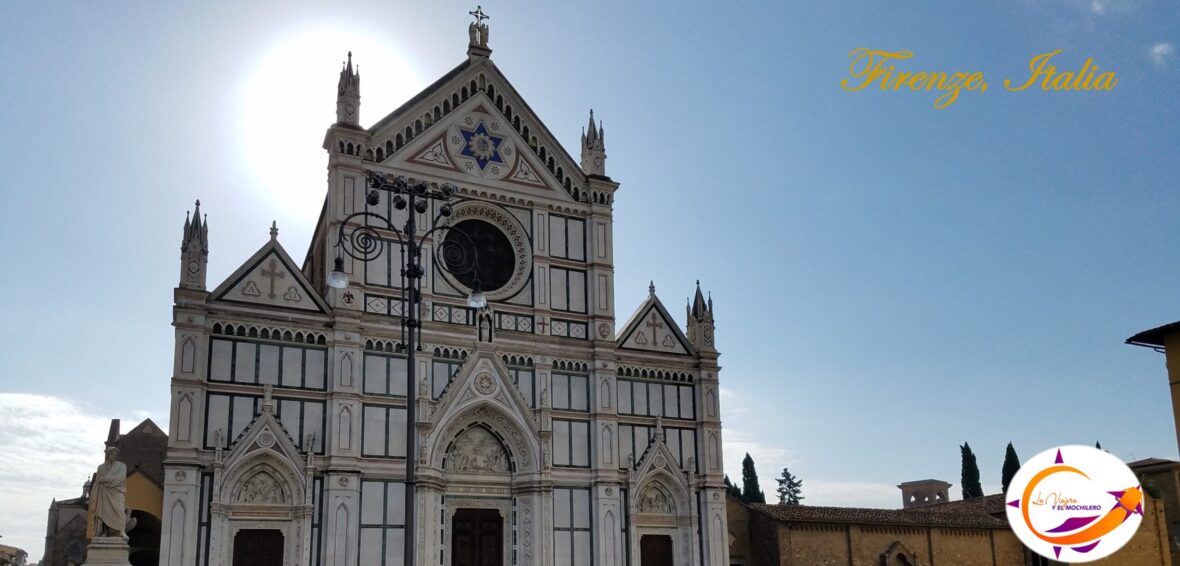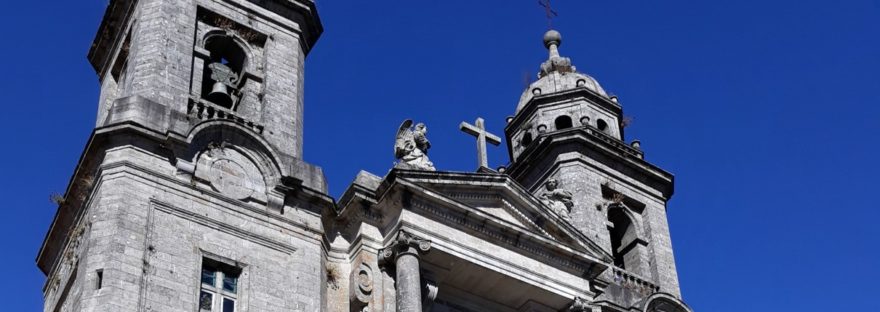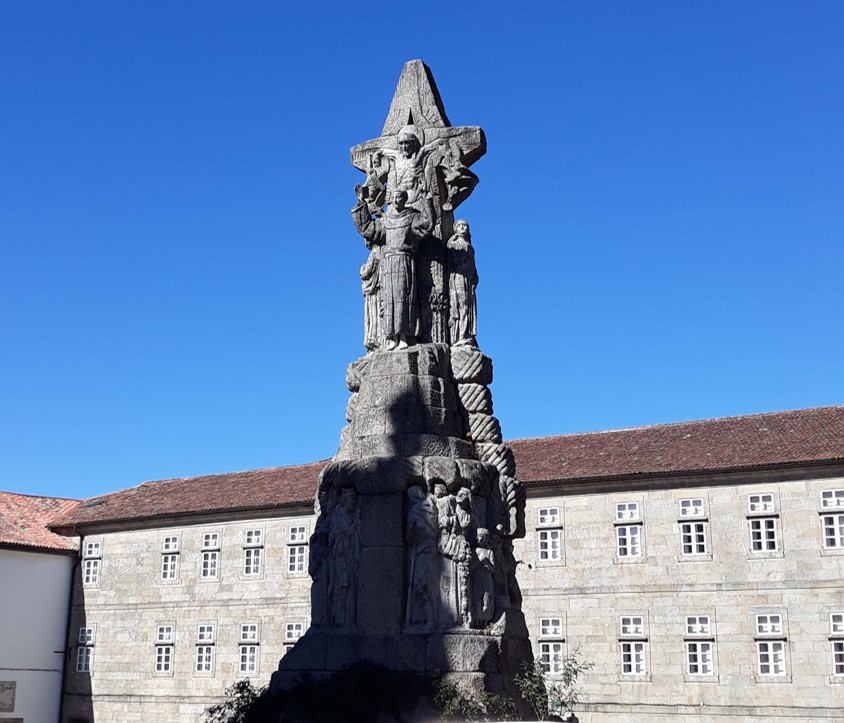 On the outskirts of the old walled city of Santiago de Compostela in Galicia, Spain, specifically on a plot of land known as “Val de Deus”, then owned by the Monastery of San Martiño Pinario, Saint Francis of Assisi visualized the construction of a convent and church that later would bear his name.
On the outskirts of the old walled city of Santiago de Compostela in Galicia, Spain, specifically on a plot of land known as “Val de Deus”, then owned by the Monastery of San Martiño Pinario, Saint Francis of Assisi visualized the construction of a convent and church that later would bear his name.
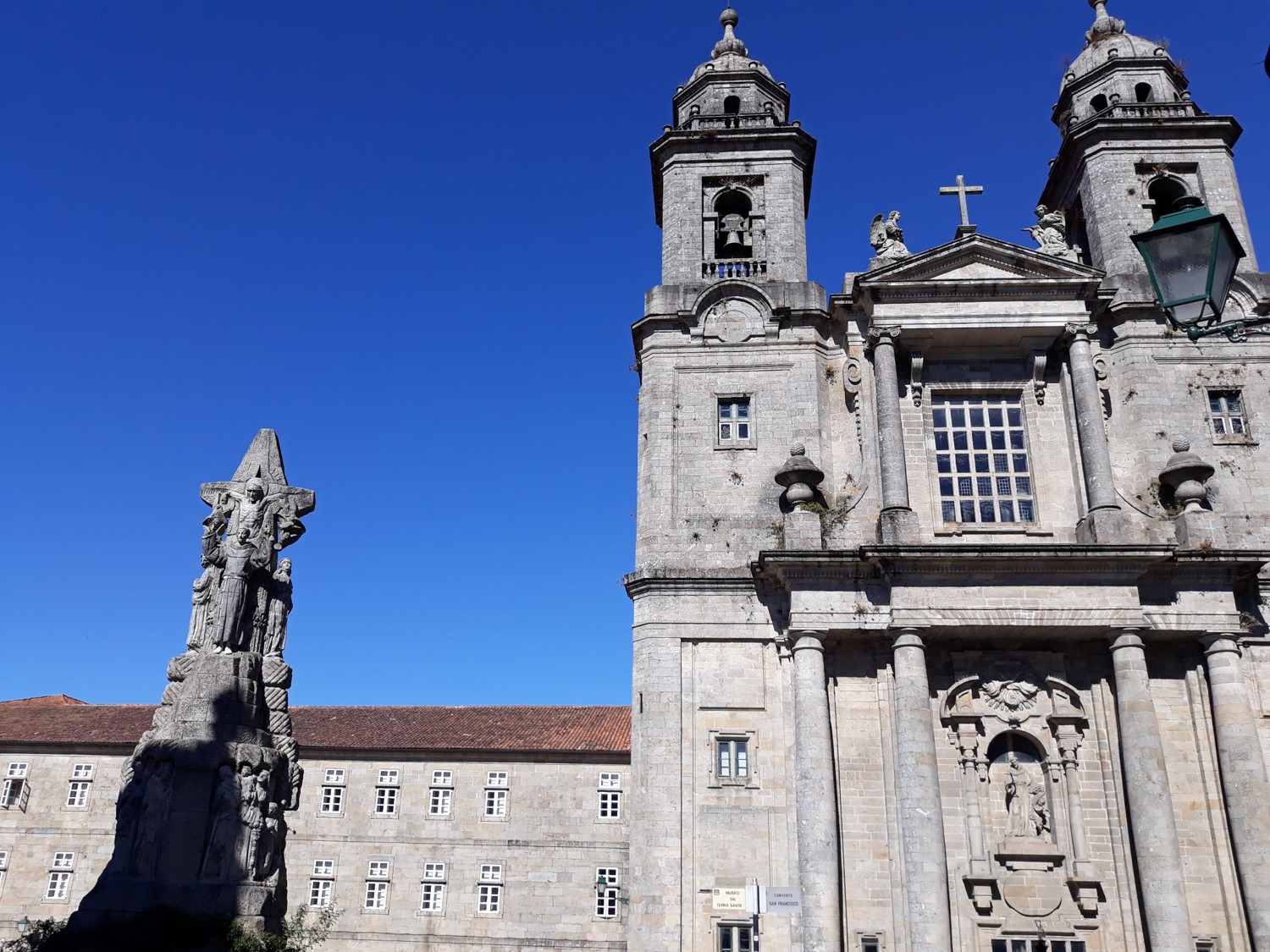
According to the legend, Saint Francis of Assisi made his pilgrimage to Santiago de Compostela in 1214, with the desire to build a convent in the “Valley of God”.
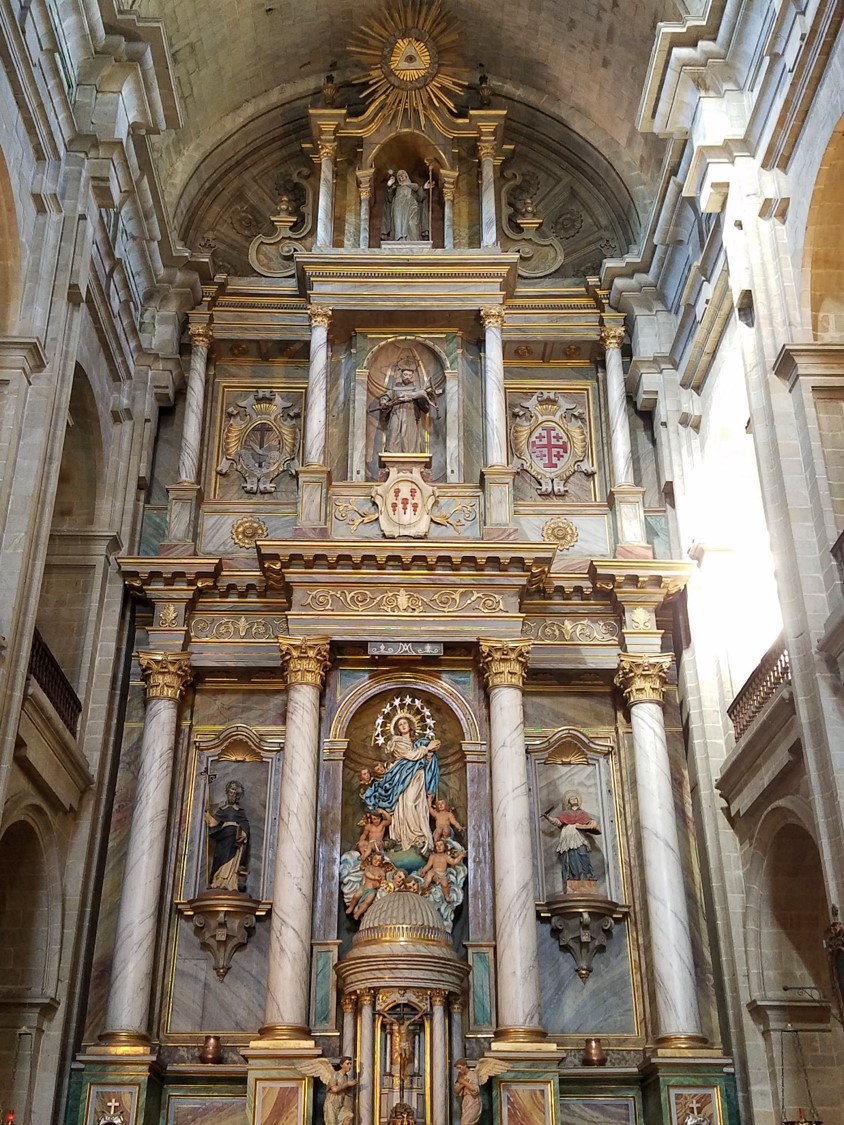
The task was delegated to the coalman named Cotolai (or Cotolay), whose remains rest in the main cloister of the enclosure. That first structure disappeared at the beginning of the 18th century. The reconstruction of the facilities that are currently observed in the Baroque style, began in 1742.
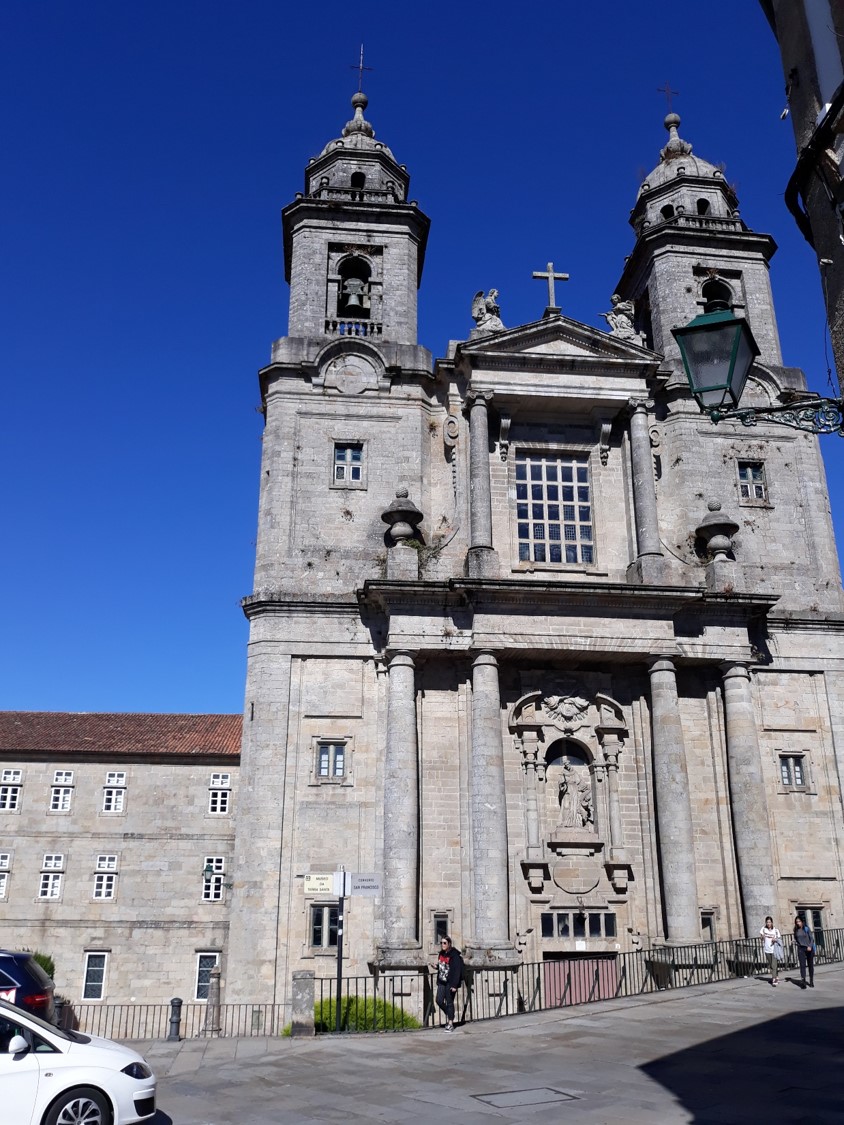
At present, part of what was the cloister, is now occupied by a small hostel that serves as a hotel for travelers and it also has a cultural center.
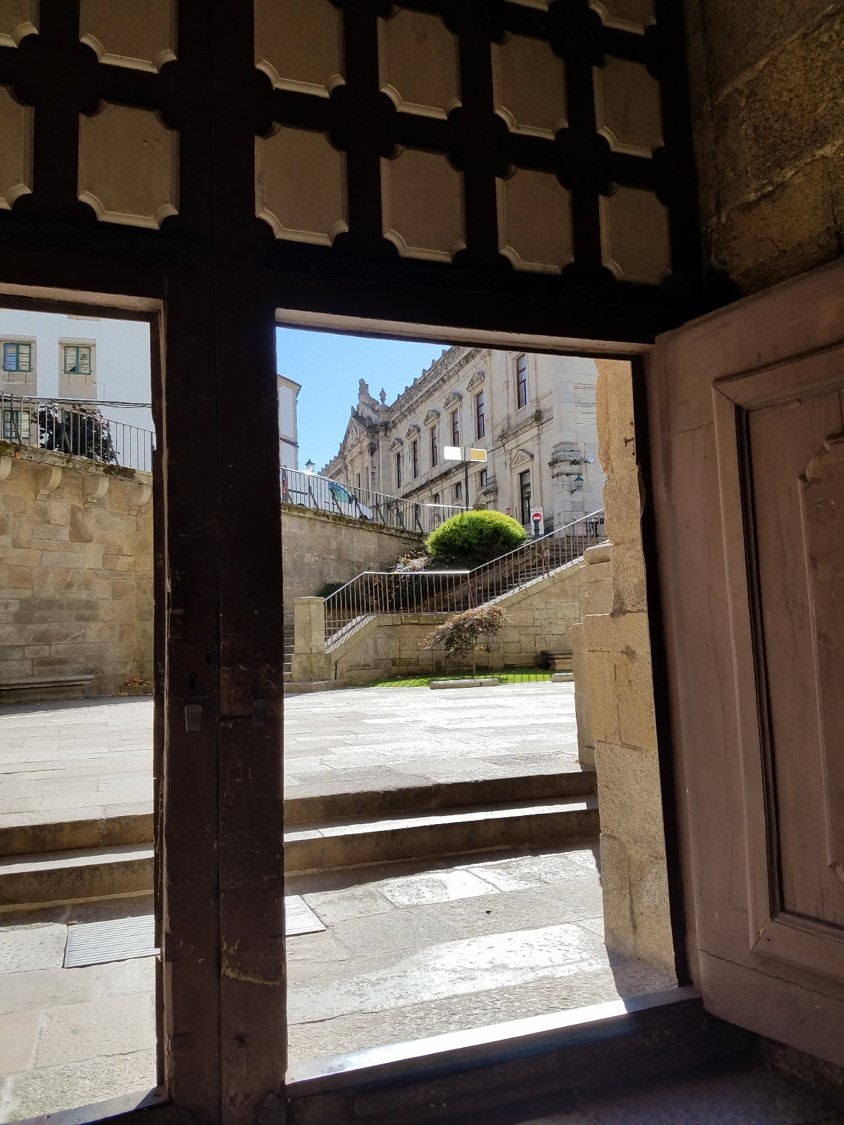
The church entrance is located below the street level of the “Rua do Campiño de San Franscisco”. It has a “Jesuit” style layout, of a rectangle shape and a Latin cross with three naves. The central nave has five sections with a barrel vault and a half moon dome. The side aisles are under the grandstands. The facade, although baroque, includes elements of the neoclassical style at the top. The Church has two bell towers.
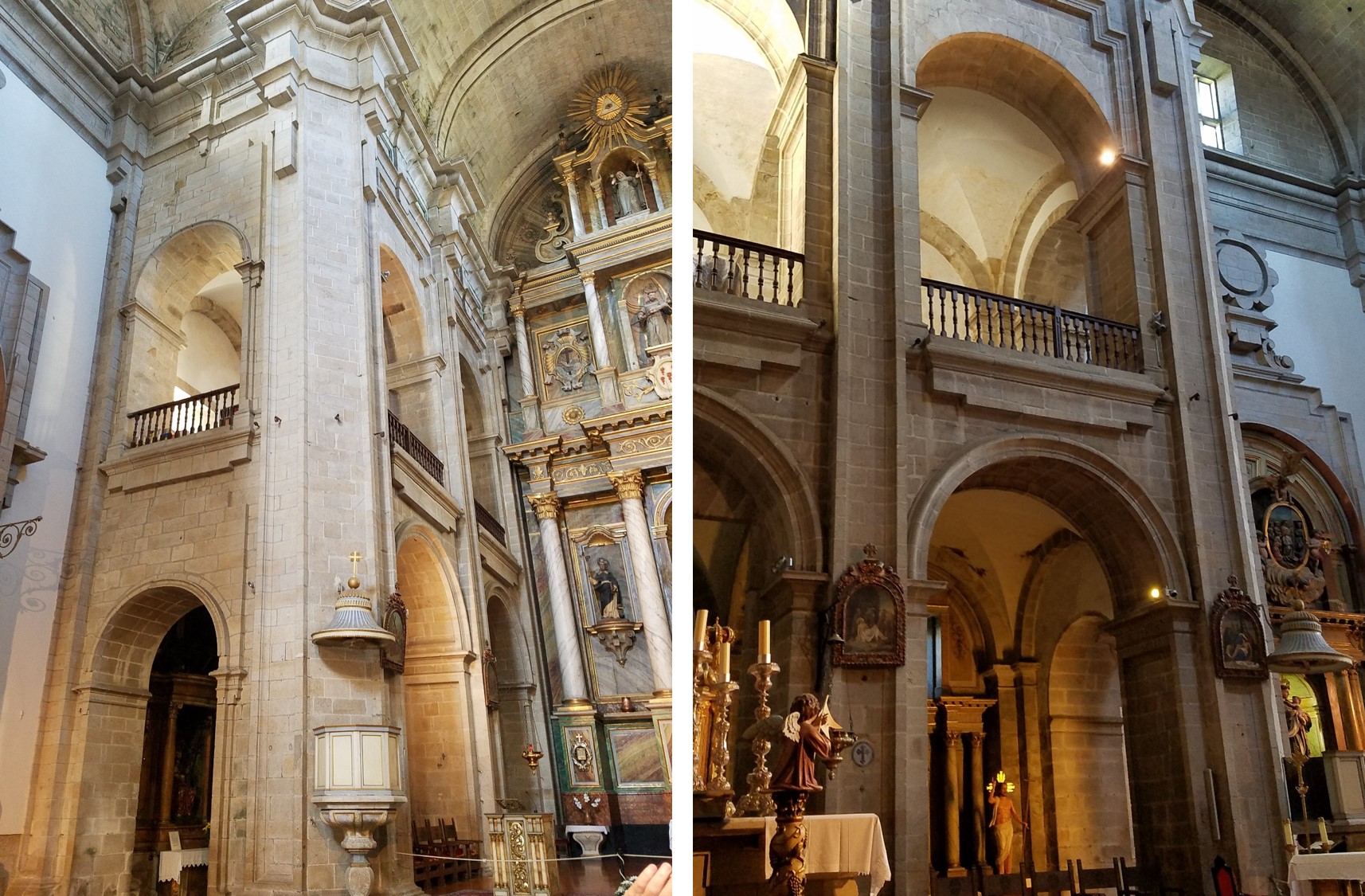
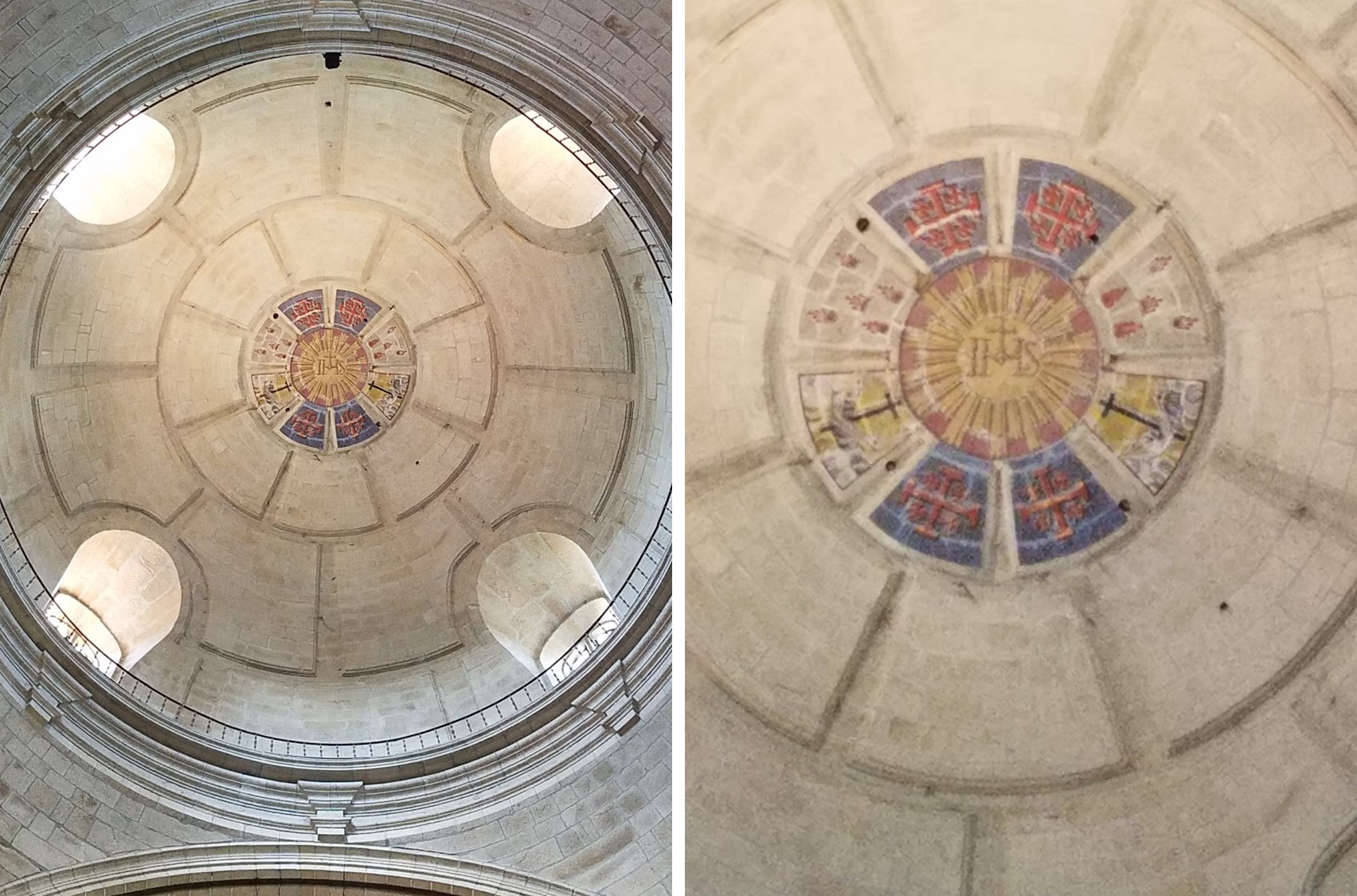
At the street level that gives entry to the Convent of “San Francisco de Valdediós”, one finds a statue in honor of Saint Francis.
